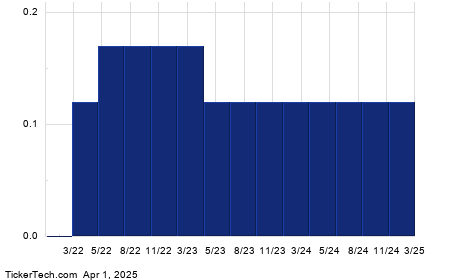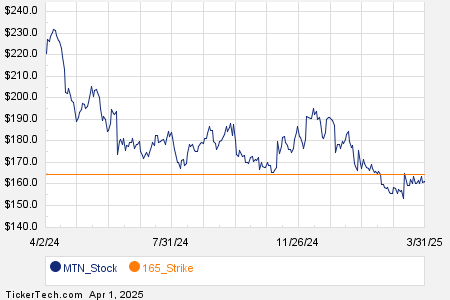Coffee Prices Shift Amidst Weather Uncertainties and Supply Concerns
As of today, May arabica coffee (KCK25) is up +0.90 (+0.24%), while May ICE robusta coffee (RMK25) has declined -64 (-1.20%). The coffee market is currently mixed, with arabica coffee rising after Somar Meteorologia predicted limited rainfall in Brazil’s coffee-growing regions over the coming week to ten days. Brazil’s largest arabica coffee co-operative, Cooxupe, has indicated that last month’s high temperatures and below-normal rainfall will negatively impact coffee yields for the year. As the world’s leading producer of arabica coffee, Brazil’s conditions are crucial to the market. Additionally, arabica inventories have tightened, with ICE-monitored arabica coffee stocks dropping to a five-week low of 771,576 bags last Friday.
Market Dynamics: Inventory and Production Forecasts
Robusta coffee, on the other hand, faces downward pressure due to expectations for an increase in global supplies. Marex Solutions projects Vietnam’s robusta production for the 2025/26 season to reach 28.8 million bags, a 7.9% year-over-year increase, while Brazil’s robusta production is expected to be 25 million bags, up 13.6% year-over-year. Furthermore, robusta supply conditions have improved, as ICE-monitored robusta coffee inventories rose to a seven-week high of 4,414 lots last Tuesday.
Despite the bullish sentiment surrounding arabica, coffee prices were under pressure last week. Arabica futures reached a one-month low last Thursday, while robusta dropped to a two-and-a-quarter month low. Easing dryness concerns in Brazil contribute to a bearish outlook for coffee prices. Recent reports indicate that Minas Gerais, the largest arabica-growing area in Brazil, received 31.1 mm of rain in the week ending March 29, which is 114% of the historical average.
Supply Shortfalls and Long-Term Concerns
Moreover, ongoing supply fears continue to sustain coffee prices. Cecafe reported that Brazil’s green coffee exports fell 12% year-over-year in February to 3 million bags. Similarly, on January 28, Conab, Brazil’s government crop forecasting agency, predicted a 4.4% year-over-year decline in Brazil’s 2025/26 coffee crop to a three-year low of 51.81 million bags. Conab also revised its 2024 coffee crop estimate down by 1.1%, from 54.8 million bags to 54.2 million bags.
On a less favorable note, Marex Solutions indicated that the global coffee surplus for the 2025/26 season could reach 1.2 million bags, widening from a surplus of 200,000 bags for 2024/25.
Weather Impact and Production Challenges
The impact of last year’s dry El Nino weather may result in prolonged damage to coffee crops in South and Central America. Brazil has experienced below-average rainfall since April 2022, harming coffee trees during the critical flowering stage and hurting prospects for the 2025/26 arabica crop. According to the natural disaster monitoring center Cemaden, Brazil is experiencing its driest weather since 1981. In comparison, Colombia, the second-largest producer of arabica coffee, is slowly recovering from the drought exacerbated by El Nino.
Robusta coffee prices are supported by reduced production. Due to drought conditions, Vietnam’s coffee production in the 2023/24 crop year dropped by 20% to 1.472 million metric tons, the smallest harvest in four years. Additionally, Vietnam’s General Statistics Office reported that coffee exports for 2024 have decreased by 17.1% year-over-year to 1.35 million metric tons. On March 12, the Vietnam Coffee and Cocoa Association revised its production estimate for 2024/25 down to 26.5 million bags from 28 million bags.
Global Coffee Exports and Price Prospects
News of larger global coffee exports is creating a bearish sentiment in the market. Conab reported that Brazil’s coffee exports for 2024 increased by 28.8% year-over-year, reaching a record 50.5 million bags. Concurrently, Vietnam’s General Statistics Office announced a 6.6% year-over-year increase in coffee exports for February, totaling 169,000 metric tons. However, the International Coffee Organization reported a 12.4% year-over-year decline in global coffee exports for December, which fell to 10.73 million bags, with total global exports from October to December down 0.8% year-over-year to 32.25 million bags.
The USDA’s biannual report released on December 18 provides a mixed outlook for coffee prices. The USDA’s Foreign Agriculture Service (FAS) projects a 4.0% year-over-year increase in world coffee production for 2024/25 to 174.855 million bags, including a 1.5% increase in arabica production to 97.845 million bags and a robust 7.5% rise in robusta production to 77.01 million bags. However, the FAS forecasts a 6.6% reduction in ending stocks to a 25-year low of 20.867 million bags, down from 22.347 million bags in 2023/24. Furthermore, on November 22, the USDA’s FAS projected Brazil’s coffee production for 2024/25 at 66.4 million metric tons, a decrease from the initial forecast of 69.9 million metric tons. They suggest that Brazil’s coffee inventories will reach only 1.2 million bags at the end of the 2024/25 season, marking a 26% year-over-year decline.
Looking ahead to the 2025/26 marketing year, Volcafe, on December 17, cut its Brazil arabica coffee production estimate to 34.4 million bags, a reduction of about 11 million bags from its earlier estimate after a crop tour revealed the severity of the prolonged drought in Brazil. Volcafe anticipates a global arabica coffee deficit of 8.5 million bags in 2025/26, broader than the projected 5.5 million bag deficit for 2024/25. This represents the fifth consecutive year of deficits in arabica coffee supply.
On the date of publication, Rich Asplund did not have (either directly or indirectly) positions in any of the securities mentioned in this article. All information and data in this article are solely for informational purposes. For more information, please view the Barchart Disclosure Policy here.
More news from Barchart
The views and opinions expressed herein are the author’s views and do not necessarily reflect those of Nasdaq, Inc.



